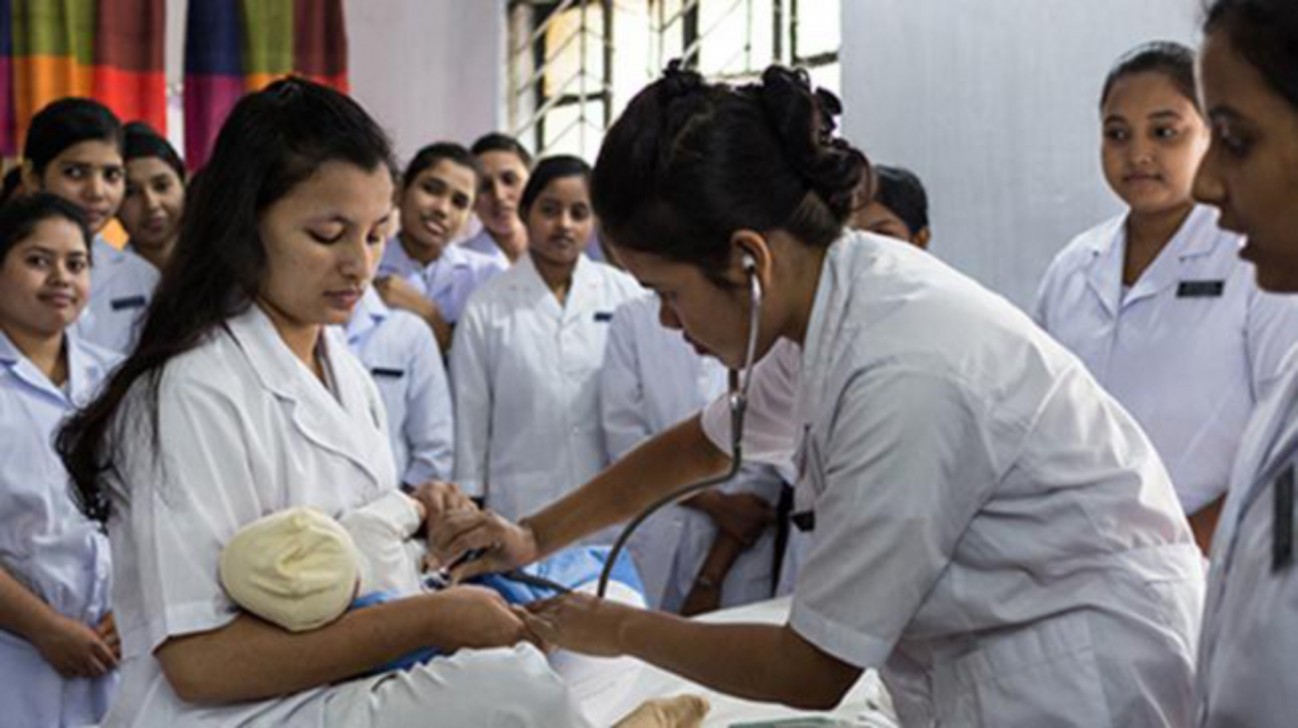Celebrate, support and strengthen the nursing and midwifery workforce
2020 is the International Year of the Nurse and the Midwife. All countries must invest in nursing and midwifery education, employment and leadership to strengthen health systems and advance gender equity
Nurses and mid-wives are central to the delivery of quality primary health services for all. Nurses are highly effective in delivering services that prevent illness, promote health, and care for the physically and mentally ill and people with disabilities. Midwives provide the essential care needed for every woman to have a positive childbirth experience, for every child to come into the world safely, and for every newborn and child to avoid disease and death. The global response to Covid-19 underscores how critical nurses are to health security. They must be supported to get the job done.
The World Health Organization (WHO) South-East Asia Region is committed to strengthening its nursing and midwifery workforce as part of its quest to achieve universal health coverage (UHC). UHC is one of eight flagship priorities in the region and the target that underpins Sustainable Development Goal 3, the health goal. In 2015, the region embarked on its Decade for Health Workforce Strengthening—a key initiative aimed at overcoming shortages and skill-gaps in health cadre across the region. By 2018, the region had increased the density of nurses and midwives to 18 per 10,000 population, up from 16 per 10,000 in 2014. In 2018, the global average density of nurses and midwives was 37 per 10,000 population. The minimum should be 40.
We must redouble our efforts: by 2030, the region will require as many as 1.9 million more nurses and midwives. Special focus must be given to ensuring they are deployed where they are needed most—rural and hard-to-reach areas. At every opportunity, policymakers and administrators should empower female health workers—especially nurses and midwives—to reach leadership roles and to be involved in decision making. All nurses and midwives must be paid fairly.
As the world marks the International Year of the Nurse and the Midwife, we must celebrate, support and strengthen the nursing and midwifery workforce, with a focus on several key areas.
First, strengthening nursing and midwifery education. Demographic changes are shifting healthcare needs and driving greater demand for services for non-communicable diseases (NCDs), care for older people and the terminally ill. For nurses and midwives to respond to these needs, policymakers and administrators must review pre-service education, including curriculum and faculty development and, where necessary, amend it. They should ensure all nurses and midwives are provided ongoing professional development opportunities, including in-service training, to enhance their knowledge and skills. Tomorrow’s challenges may be different from today’s.
Second, policymakers and administrators should ensure that the work environment for nurses and midwives is safe, healthy and satisfying. The hours nurses and midwives work should be reasonable and aligned with national labour laws. The on-the-job hazards nurses and midwives are exposed to should be minimised and, wherever possible, eliminated. Nurses and midwives should never be subjected to violence. By providing a positive and enabling environment for nurses and midwives, policymakers and administrators will increase recruitment, retention and motivation. This is particularly important as countries enhance the quality of health services in remote and hard-to-reach areas.
Third, increased focus should be put on strengthening nursing and midwifery leadership and management. Evidence shows that countries that have a chief nursing officer and a nursing leadership programme have stronger regulatory environments for nursing and midwifery. This helps them to ensure all nurses and midwives have adequate capacity and skills and can work effectively in interdisciplinary teams. It also means that, when developing policy, they are more likely to benefit from the knowledge and experience nurses and midwives have. Nurses and midwives must be enabled to develop their leadership potential and participate in key decision-making forums.
Additional investments are needed. The first ever State of the World’s Nursing Report shows that low- and middle-income countries should investment an additional USD 10 per capita for nursing education alone. In most countries, this can be achieved with domestic funds. In some countries, development partners and financing institutions can help. By transferring human capital investments for education, employment, gender and other areas into national health workforce strategies, partners can strengthen the nursing and midwifery workforce while driving job creation, gender equity and youth engagement.
The WHO South-East Asia Region must sustain and accelerate its progress. We are now in the sixth year of the region’s Decade for Health Workforce Strengthening. We must pick up the pace and drive further gains. WHO is committed to supporting all countries in the region to strengthen their nursing and midwifery workforce as together we pursue our overarching goal: universal health coverage. Health for all at all ages is possible. We can—we must—make it happen.
Dr Poonam Khetrapal Singh is WHO South-East Asia Regional Director.
Source: The Daily Star


